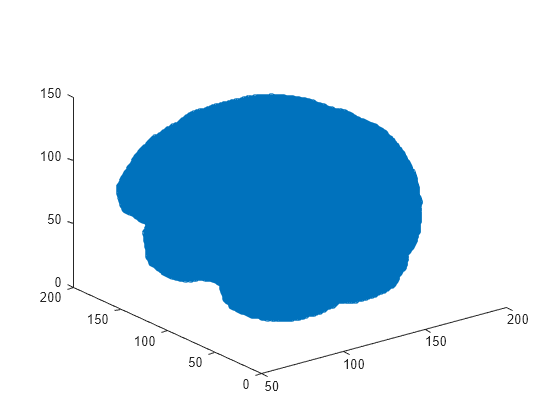imregicp
Syntax
Description
The imregicp function uses the iterative closest point (ICP)
algorithm for rigid registration of surfaces. Use this function to register surfaces extracted
from medical volumes.
regSurface = imregicp(movingSurface,fixedSurface)movingSurface, so that it is registered with the
reference surface fixedSurface using the ICP algorithm. The function
returns the registered surface regSurface.
regSurface = imregicp(movingSurface,fixedSurface,Name=Value)
[
returns the transformation regSurface,tform] = imregicp(___)tform between the moving surface and the
registered surface, in addition to any combination of input arguments from previous
syntaxes.
[
returns the root mean squared error (RMSE) regSurface,tform,rmse] = imregicp(___)rmse of the Euclidean
distance between the inlier points of the aligned surfaces regSurface
and fixedSurface, in addition to any combination of input arguments
from previous syntaxes.
Examples
Input Arguments
Name-Value Arguments
Output Arguments
References
[1] Besl, P.J., and Neil D. McKay. “A Method for Registration of 3-D Shapes.” IEEE Transactions on Pattern Analysis and Machine Intelligence 14, no. 2 (February 1992): 239–56. https://doi.org/10.1109/34.121791.
Version History
Introduced in R2022b


